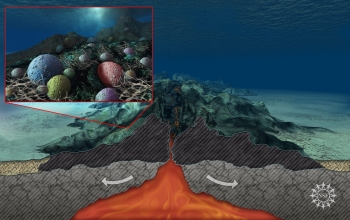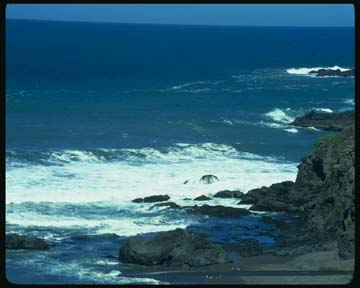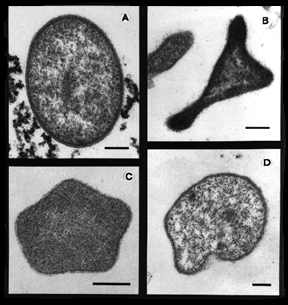These Archaea species live in extreme heat near deep sea vents.
Click on image for full size
Image courtesy of NOAA
Related links:
A Matter of Scale - interactive showing the sizes of things, from very tiny to huge - from NSF
Rock Eating Bacteria Found at the Bottom of the Sea
Archaea
Archaea are microbes. Most live in extreme environments.
Some love the heat! They like to live in boiling water, like the geysers of Yellowstone Park, and inside volcanoes. They would probably freeze to death at ordinary room temperature. Other Archaea love to live in very salty environments. They are able to survive in these extreme places where other organisms cannot. Other Archaea species live in ordinary temperatures and salinities. Some even live in your guts!
Archaea was originally thought to be just like bacteria, but it is a very different and much simpler form of life. Archaea may be the oldest form of life on Earth.
Planets which contain an environment wherein archaea might survive include Venus, the past environment of Mars, Jupiter, Saturn, and Jupiter's moon Io.
Last modified April 29, 2004 by Lisa Gardiner.
You might also be interested in:

Jupiter's atmospheric environment is one of powerful winds, going 250 miles per hour, and temperatures from -270 degrees to +32 degrees (freezing temperature). These winds make it hard for life forms to
...more
Saturn's atmospheric environment is one of powerful winds, going 250 miles per hour, and temperatures from -270 degrees to +80 degrees. With winds like these, it is hard to have peace and quiet. The region
...more
Each Eubacteria is a tiny prokaryotic cell. Some can make food from sunlight through photosynthesis. Cyanobacteria, also called blue-green algae, are able to do this. They have been living in the oceans
...more
Has anyone ever told you that you shouldn’t eat things that you find on the floor? Well, the rules are different for bacteria. Scientists have found tons of bacteria at the bottom of the ocean. And it
...more
When you think of an ocean, this is what usually comes to mind! As we've said in the discussion of life on Earth, liquid water seems to be important to life. According to the Miller Urey hypothesis, the
...more
The Archean is the name of the age which began with the forming Earth. This period of Earth's history lasted a long time, 2.8 billion years! That is more than half the expected age of the Earth! And no
...more
The first beings were probably much like coacervates. As a group, these bacteria were heterotrophic , meaning that they ate food which came from somewhere else. Because there was virtually no oxygen in
...more















